Casemate Illustrated brings military history to life with rich visuals and detailed illustrations. Perfect for history buffs and modeling enthusiasts, these books offer an engaging way to learn about various conflicts.

Format: Paperback
Pages: 128
ISBN: 9781636244358
Pub Date: 15 Feb 2025
Illustrations: 150 photographs, maps and artwork
Description:
By October 1943, the German 17th Army had been forced to retreat from the Kuban bridgehead across the Kerch Strait to Crimea. During the following months, the Red Army pushed back the German forces in the southern Ukraine. In November 1943, they eventually cut off the land-based connection of 17th Army through the Perekop Isthmus.
Hitler prohibited a sea evacuation of 17th Army because he thought the Red Army could use the Crimean Peninsula to launch air attacks against Romanian oil refineries.In November 1943, the Russian launched a massive amphibious assault at two locations on the eastern coast of the Crimea, but its units were unable to prevent an Axis counterattack that collapsed the southern bridgehead. The Red Army held the bridgehead at Yenikale, from which they launched further offensive operations, culminating in a huge offensive in April 1944.Although the 17th Army bitterly contested every bit of ground, it was unable to stop the advance. Soviet forces reached Kerch on April 11, forcing the 17th Army to retreat towards Sevastopol. The remaining Axis forces in the Crimea were concentrating around the city by the end of the third week of April.The Germans intended to hold Sevastopol as a fortress, as the Russians had done between 1941 and 1942. However, the fortifications of the city had not been restored and the city fell on 9 May.From mid-April, Romanian and German ships undertook a huge and complex evacuation operation. The last phase of the evacuation, following the fall of Sevastopol, saw 37,000 troops transported under constant attacks from Soviet aircraft and shore artillery. Overall around 57,000 men were lost during the evacuation.Fully illustrated with rare and unpublished photos, this is a detailed account of the dogged attempt to retake the Crimea in 1943–44.

Format: Paperback
Pages: 128
ISBN: 9781636244792
Pub Date: 31 Jan 2025
Illustrations: Over 120 photographs and illustrations
Description:
The summer of 1863 started off disastrously for the Army of the Potomac in the Eastern Theater. In early May, Confederate General Robert E. Lee’s Army of Northern Virginia defeated and humiliated Major General Joseph Hooker’s army at the Battle of Chancellorsville.
While both armies reorganized in the wake of Chancellorsville’s massive losses, Lee then maintained the initiative and launched an invasion of Pennsylvania. Throughout June, Lee’s army advanced deeper into Pennsylvania and Northern efforts to stop his progress were ineffective until Major General George Meade replaced Hooker as commander of the Army of the Potomac. On July 1, 1863, Meade and Lee’s large armies collided outside of the crossroads town of Gettysburg, Pennsylvania. The stakes were never higher for either army as the newly promoted Meade defended Northern soil, while General Lee risked everything by taking the war into enemy territory.The first day of the Battle of Gettysburg is often overshadowed by fighting on the following days, but July 1 was one of the bloodiest single engagements of the entire Civil War. Many of the decisions leading to and through Gettysburg’s first day remain steeped in controversy. Did Meade intend to fight on the Pipe Creek line in Maryland until subordinates such as Major General John Reynolds forced the engagement at Gettysburg? Did the absence of J. E. B. Stuart’s cavalry really leave Lee “blind” to his opponent’s movements? Was Lee’s desire to avoid a general engagement ignored by his own officers? With neither commanding general on the battlefield for much of the day, crucial decisions remained in the hands of subordinates such as John Buford, John Reynolds, A. P. Hill, Richard Ewell, and Oliver Howard.This Casemate Illustrated volume sets the stage for the Civil War’s greatest battle and covers the heroism, decisions, and mistakes made on the first day at Gettysburg.
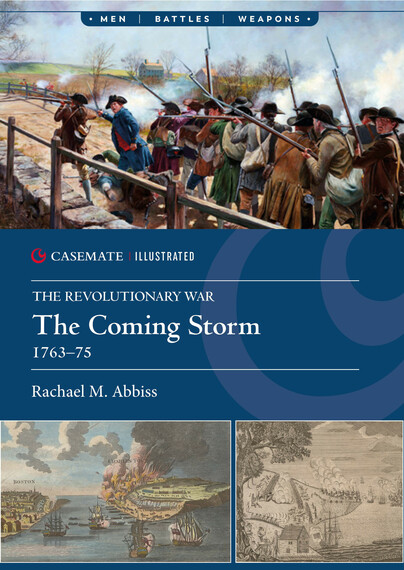
Format: Paperback
Pages: 128
ISBN: 9781636240923
Pub Date: 31 Dec 2024
Illustrations: 100 photographs and illustration
Description:
The 17th and 18th centuries witnessed a period of almost constant conflict in Europe and North America. In New England, the threat of invasion from the French in the North and the Spanish in the South weighed heavily on the colonists. The Crown's solution was to send an army from Britain to help govern, organise and protect the colonies, but ultimately this was not enough to secure loyalty and quell the whispers of revolt.
For over a century, discontent simmered, but allegiance to the Crown and the military protection provided by Britain superseded – at least initially – the majority of grievances. Before 1763, many colonists fought for King and Country during multiple battles and the monarchy had demonstrated an ability to support and defend the colonies. Over time, however, Britain and the colonists disagreed on methods of governance and taxation, and how best to protect territory and trade. As wars waged on, allegiances became strained and imperial control required a different and perhaps more considered approach. This was not forthcoming, as Crown and Parliament continued to tighten political and economic rule, which both divided and provoked the colonists. Some, such as the political propagandist Thomas Paine, eventually argued: 'the period of debate is closed… 'TIS TIME TO PART.'

Format: Paperback
Pages: 128
ISBN: 9781636240787
Pub Date: 31 Dec 2024
Illustrations: 100 photographs and illustration
Description:
Having declared their independence, Britain's former colonies in North America would need to fight for their liberty. The response from the other side of the Atlantic was slow, but when it arrived it appeared overwhelming. Hundreds of ships and tens of thousands of troops gathered to re-establish the Crown's control.
If the Revolution was not to die in its first year, the Americans would need to take on the largest expeditionary force ever sent by Great Britain up to that point… with an army of amateurs.The 1776 campaign saw a nearly uninterrupted string of British victories; at Long Island, White Plains and Fort Washington the Americans proved unable to stand against the disciplined regulars led by General William Howe, who received a knighthood for his efforts. The war appeared all but over as General George Washington led the tattered remnants of his army to safety at the end of the year, but as British thoughts turned to the next campaign, Washington showed that he was not yet finished, winning significant morale-boosting victories at Trenton and Princeton.Detailing the armies, commanders, strategies and tactics employed on both sides, The Northern Strategy, 1776 takes a fresh look at one of the most remarkable campaigns of the 18th century, one in which the British failed to secure their longed-for knockout blow and instead found themselves drawn into a long and painful war of attrition.
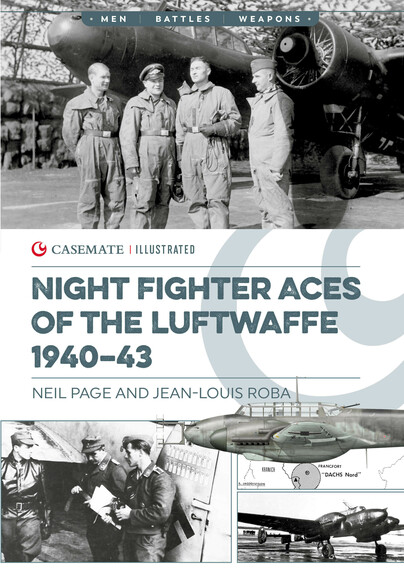
Format: Paperback
Pages: 128
ISBN: 9781636244907
Pub Date: 21 Nov 2024
Illustrations: 100+ photographs and artwork
Description:
On 10 May 1940, the Wehrmacht launched its assault on the West. One element of the West’s response was the dispatch of RAF Bomber Command ‘heavy’ bombers at night over German industrial centers. These raids had only limited effectiveness, but so annoyed the enemy that he decided to create a credible night fighter force.
Its first few months were fairly chaotic, with constant reorganizations of units, and reassignment of aircraft, but soon enough the first Gruppe was achieving steady victories—and losing crews at a similarly steady rate. The time it took to set up further groups shows that the night fighter arm, despite the efforts of those in charge, was already short of aircraft and personnel, probably as a result of the growing importance of the Eastern Front and, for some time thereafter, the Mediterranean Front.Fully illustrated, this CI gives a full chronological account of the Night Fighters, covering major campaigns, the biographies of individual aces, and the details of their aircraft.

Format: Paperback
Pages: 128
ISBN: 9781636243887
Pub Date: 21 Nov 2024
Illustrations: 120–150 illustrations
Description:
In early 1945, the Red Army marched into East Prussia. Having advanced across Poland, relentlessly pushing back German forces, the Red Army built up forces along the Oder River, preparing for the final push towards Berlin. But before that battle could take place, it was necessary to clear and destroy German forces in Pomerania and West Prussia.
In February 1945, the 2nd Byelorussian Front was advanced west north of the Vistula River toward Pomerania and the major port city of Danzig, with the primary aim of protecting the right flank of Zhukov’s 1st Byelorussian Front, which was pushing towards Berlin. The opening of the offensive saw a series of heavy attacks east of Neustettin against the towns of Kontiz and Koslin. The fighting was bitter, resulting in the entire left wing of the 3rd Panzer Army being cut off.Forward Soviet tank units reached the Baltic, and the German forces in Pomerania became trapped in a series of encirclements. Russian troops then pushed on to Danzig—strategic location and the last German stronghold in the region—reaching it in early March and putting it under siege. A third stage was the operation to take the Arnswalde and Kolberg areas. Kolberg was one of the key German positions in the “Pomeranian wall,” the vital link between Pomerania and Prussia. The German high command had planned to use the port facilities for the logistical supply of nearby German forces, and hoped that the presence of this stronghold would lure Soviet forces away from the main thrust toward Berlin. The ensuing battle was brutal, with Soviet troops eventually seizing Kolberg. Finally, spearheads of the 1st Byelorussian Front advanced against the German Eleventh SS Panzer Army, which was being assembled in Pomerania. What followed was a bitter and bloody battle for the town of Altdamm.The offensive successfully cleared the remnants of German forces northeast of Berlin, allowing Zhukov’s forces to finally launch the battle of Berlin from the Seelow Heights on the Oder on April 16, 1945.
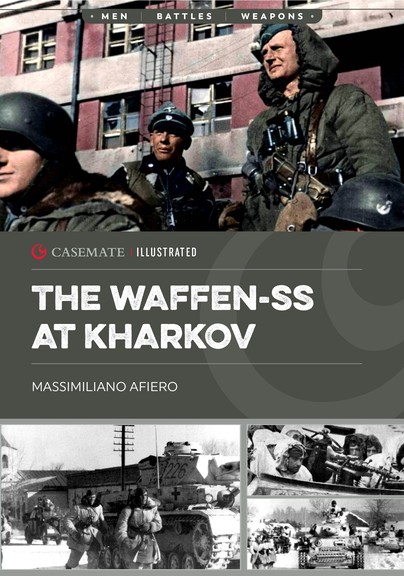
Format: Paperback
Pages: 128
ISBN: 9781636244396
Pub Date: 21 Nov 2024
Illustrations: photographs, maps and artwork
Description:
At the beginning of 1943, the German armed forces were in crisis on the southern front in Russia. The Soviets had launched a series of offensives from November 1942 that pushed the Germans back hundreds of kilometers. The Germans had no more significant reserves available, and enormous breaches had opened between defensive lines.
In early January 1943, the Soviets attacked again, with the aim of reconquering the industrial city of Kharkov and destroying the remaining German and Axis troops in southern Ukraine, including the 4. Panzerarmee, 1. Panzerarmee, Armeeabteilung Hollidt and Armeeabteilung Fretter‐Pico.After the encirclement of 6. Armee at Stalingrad and the destruction of the Axis forces there, the loss of these four armies would certainly have led to German defeat on the Eastern Front. Believing victory was near, Stalin and his generals decided to launch their new offensives even before the garrison of Stalingrad surrendered. The main effort fell on Army Group Don, newly formed and with little forces available. Facing a massive offensive, Commander Erich von Manstein was ordered to hold the city at any cost, risking the destruction of two divisions of the Waffen‐SS and the “Grossdeutschland” army division. SS Panzer Corps commander Paul Hausser disobeyed Hitler’s order and ordered the retreat from Kharkov, saving the two SS divisions. This meant that Manstein had at his disposal forces needed to launch his counteroffensive.The subsequent battles for Kharkov saw the three divisions of the Waffen‐SS—Leibstandarte Adolf Hitler, Das Reich and Totenkopf— fighting together for the first time. In the first phase of the offensive, the SS Das Reich and Totenkopf marched 100 kilometers south of Kharkov, blocking the Soviet army from capturing the bridges over the Dnieper River, while the Leibstandarte successfully defended the corps supply base in Krasnograd. After protecting the bridges over the Dnepr, the Das Reich and Totenkopf units headed north and regained control of the vital railway network south of Kharkov. The Soviet 3rd Tank Army was forced to abandon its attack against Krasnograd to regroup south of Kharkov and protect the city from Hausser’s divisions. At that point the Leibstandarte joined the other divisions of the corps SS to eliminate Soviet forces and recapture Kharkov. With its reconquest, Southern Ukraine returned firmly under German control.This is a fully illustrated account of the decisive victory attained by the SS Panzer Corps divisions at a time of serious crisis for the Axis forces.

Format: Paperback
Pages: 128
ISBN: 9781636244600
Pub Date: 15 Nov 2024
Illustrations: 150 photos
Description:
A fully illustrated introduction to the role, and experience, of the Panzer crewman.The German Panzerwaffe ripped up the rulebooks of war that had been laid down by the grinding slaughter of the trenches of World War I. Armored vehicles, close-air support, and bold leadership based on mission command, Auftragstaktik, cut a deadly swathe through the armies of east and west Europe.
The Panzers made a significant contribution to Nazi successes; they remained steadfast in defense as their conquests slipped away their grasp from the apogee at Stalingrad and El Alamein in late 1942, through the long years of retreat to final defeat. Attrition and overwhelming odds blunted the opportunities for advances, but with increasingly powerful weaponry, the Panzerwaffe stiffened the German defensive backbone right to the end.Part of the reason for these successes was undoubtedly the Panzers themselves, but it wasn’t just the weapons that led to the Panzers’ successes—it was the way they were handled. A weapon is only as good as those who use it and the Panzertruppen—from higher command down to individual crew members—proved themselves to be very good at using their weapons. Not just the men who fought in the tanks but those who maintained them and kept them in the field, recovered and rebuilt the casualties, and dealt with the over-complexity of design and the huge variety of types of tank, weapon and ammunition. Selection and training standards—so good in the early war years—may have dropped off as wartime exigencies bit deep, but from 1939 to 1945 German Panzer crew were second to none. This Casemate Illustrated provides a full introduction to the role, and experience, of the Panzer crewman.
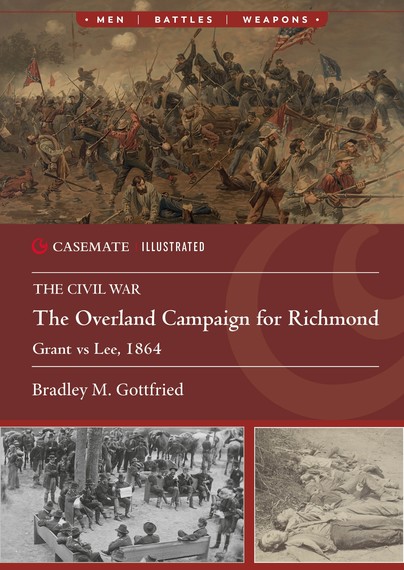
Format: Paperback
Pages: 128
ISBN: 9781636243924
Pub Date: 15 Nov 2024
Description:
A full account of the Wilderness to the James River, including Grant's rise to high command, the condition of the armies going into the critical 1864 campaign, a deep look at the commanders on both sides, and the strategy of the campaign from both perspectives. The study is combat, strategy, and tactics from the first day of action until the last, when Grant—unable to capture Richmond, but now south and east of the capital—builds a long bridge and crosses the James River to attack Petersburg. Illustrated by photographs and excellent maps, it will conclude with a note about visiting the battlefields, the casualties, the treatment of wounded, and the burial of the dead.
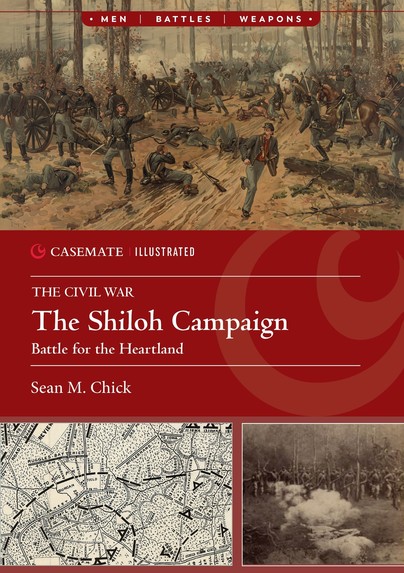
Format: Paperback
Pages: 128
ISBN: 9781636243696
Pub Date: 15 Nov 2024
Illustrations: 100-120 photographs, artworks and maps
Description:
After taking Forts Henry and Donelson, the Union army prepared to try and take the vital rail hub of Corinth, Mississippi. To facilitate this, Major General H. Halleck planned to combine Grant’s Army of West Tennessee with Buell’s Army of the Ohio.
Meanwhile the newly formed Confederate Army of the Mississippi was placed under the command of General A. S. Johnston. Johnston planned to attack Grant’s encampment before Grant and Buell could combine their commands.The Confederate army left Corinth and marched north into Tennessee. On the morning of April 6, 1862, Johnston attacked at Shiloh, taking Grant’s forces by surprise. Grant’s troops put up a tenacious defense with their backs against the Tennessee River. Unfortunately for the Confederates, Johnston was killed early that afternoon. Buell’s army arrived that night and next morning launched a counterattack along with Grant’s semi-organized survivors. The Union forces were too large to be stopped, and after a stout defensive effort Beauregard ordered a withdrawal. The first great bloodbath of the Civil War was over, resulting in up to 30,000 killed, wounded, and captured. Its ramifications would be felt for the rest of the war.Illustrated with photographs, paintings and maps, this is a full account of the first large set-piece battle of the war, the only time a large Union army was taken by surprise.

Format: Paperback
Pages: 128
ISBN: 9781636244372
Pub Date: 15 Nov 2024
Description:
In the spring of 1945, simultaneously with the battle of the Seelow Heights, powerful Red Army spearheads participated in a three sub-offensive operations in order to clear German resistance for the Berlin operation. Between April 13 and 17, 1945, elements of the 2nd Belorussian Front replaced parts of the 1st Belorussian Front and began to prepare their offensive operations. Bitter fighting ensued, as German units desperately tried to hold their positions.
Whilst these operations continued with unabated ferocity, Zhukov’s 1st Belorussian Front broke through the final line of the Seelow Heights and nothing but broken German formations lay between them and Berlin.On April 20, Hitler's 56th birthday, Soviet artillery of the 1st Belorussian Front began shelling Berlin in preparation for attacking the city. At the same time the 1st Belorussian Front advanced towards the east and northeast of the Reich capital, whilst the 1st Ukrainian Front smashed through the last formations of the northern wing of the German Army Group Center. What followed was the Soviet Battle for Berlin. Once the 1st Belorussian Front and 1st Ukrainian Front completely encircled the city, over one million Russian soldiers began attacking into the suburbs towards the center. They faced some 45,000 soldiers in several severely depleted Wehrmacht and Waffen-SS divisions. These divisions were supplemented by the Berlin Police force, and the Hitlerjugend and Volkssturm, mainly manned by teenaged boys.
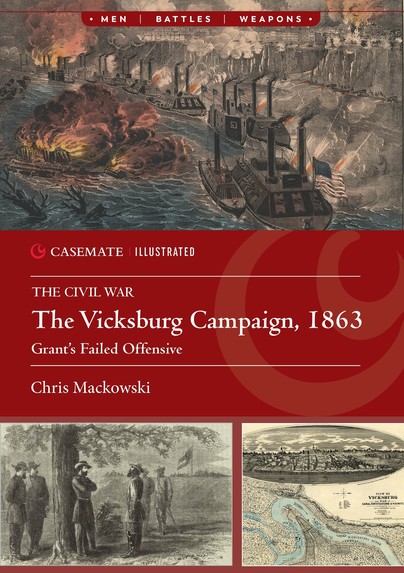
Format: Paperback
Pages: 128
ISBN: 9781636243733
Pub Date: 15 Nov 2024
Illustrations: 100-120 photographs, artworks and maps
Description:
The 14-month campaign to regain the control of Mississippi River by capturing Vicksburg, Mississippi stands as the prime example of how the Civil War would be fought and won. The Federal government’s policy of blockading the southern ports and controlling the inland waterways would only be successful with total control of the country’s largest river. Technological advances created by the war itself and used by progressive thinking Federal and Confederate commanders ensured that this vital southern supply and logistics base would be the focal point of the war on the western waters.
Ulysses S. Grant, who had risen to fame as one of the North’s prominent heroes early in the war, boldly concluded that Vicksburg would be the next nut to crack in the Federal policy for control of the Mississippi River. Understanding that only a strong relationship with US Navy could ensure the success of Vicksburg’s surrender, Grant found a man as bold and daring as himself in David Dixon Porter and his Mississippi Squadron of ironclad gunboats and fleet of vessels. These two commanders and their trusted subordinates would frustrate John C. Pemberton’s attempts to defend Mississippi and eastern Louisiana for the Confederacy. A lack of experience in commanding such an important assignment, limited resources, poor staffing, and a Confederate government consumed with the war in the east ensured Pemberton’s position would be insurmountable as the Confederacy’s tenuous hold on the Mississippi River began to fall apart.

Format: Paperback
Pages: 128
ISBN: 9781636243900
Pub Date: 15 Nov 2024
Illustrations: 100– illustrations
Description:
By the end of March 1863, Major General Ulysses S. Grant was at a crossroads in his military career. His bold attempts in the late fall 1862 and winter of 1862/63 had all come up fall short of his objective: get his army on high ground north and east of Vicksburg and capture the last major obstacle on the Mississippi River.
Grant had been stymied by the difficult region’s swampy bayous as well as Confederate resistance at key locations that thwarted his advances and prolonged his army’s miserable dispositions in the sickly camps of Louisiana bottomland. Confederate Lieutenant General John C. Pemberton had performed well using his interior rail lines and intelligence networks to place blocking forces or obstructions that delayed or derailed Grant’s movements.Realizing his career was on the line, Grant chose the riskiest operation he could have concocted. In a joint military operation, Grant marched two of his army corps down the roads and along the bayous of Louisiana, repairing them as they progressed, while Acting Rear Admiral David Dixon Porter led his ironclad gunboats with transports past the Confederate heavy artillery defending Vicksburg’s riverfront. It was Grant’s hope to get enough boats below the city to enable a crossing of the Mississippi River, a forced march into the state, and arriving at Vicksburg’s doorsteps from the east–west approach. In doing this, Grant would severe his main line of logistics and supply, something his subordinate officers thought was a disastrous mistake. Grant would take the risk in a zero-sum game: he would capture Vicksburg or destroy himself and his army doing so.This Casemate Illustrated examines the movements of the Union and Confederate armies from March 1863 through July 1863, the joint-operational cooperation between the U.S. Army and U.S. Navy, the delayed and indecisive Confederate operations to stop the Federal initiative, and how the individual soldiers conducted the one of the greatest campaigns in American military history: to control the “The Father of Waters”—the Mississippi River.
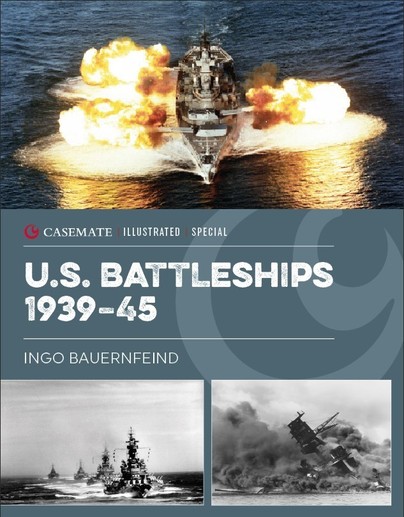
Format: Hardback
Pages: 240
ISBN: 9781636242569
Pub Date: 30 Jun 2024
Series: Casemate Illustrated Special
Illustrations: B/w and colour images
Description:
For nearly half a century, the battleship was the most powerful weapon on the ocean, deployed by the US Navy and many other fleets. However, their time seemed to be at an end when Japanese carrier-based aircraft destroyed so many at Pearl Harbor in 1941, ushering in the age of the aircraft carrier. Nevertheless, US battleships continued to serve with distinction in various roles throughout World War II and during the Cold War.
Naval historian Ingo Bauernfeind tells the dramatic yet successful story of the US Navy’s battleships and battle cruisers by class, ranging from the early Dreadnought-type of the South Carolina-class to the gigantic Montana-class, which were approved but never built. This fully illustrated volume gives a clear overview of each ship’s career, its fate and highlights its significance in American naval history. Besides covering various battles in the Pacific, it also describes the important actions of US battleships providing shore bombardment during the invasions of Iwo Jima and Okinawa as well as during the D-day landings in Normandy, thus illustrating their contribution to Allied victory in World War II. Moreover, it covers the little-known actions of the Iowa-class during the Korean and Vietnam wars and even during Operation Desert Storm in 1991, when the modernised USS Missouri and USS Wisconsin fired guided missiles and operated drones in addition to the use of their historic 16-inch guns. This volume culminates in a guided tour through the mighty USS Missouri, an overview of the other seven preserved US battleships serving as floating museums for future generations, as well as a dive to the sunken USS Arizona and USS Utah at Pearl Harbor.
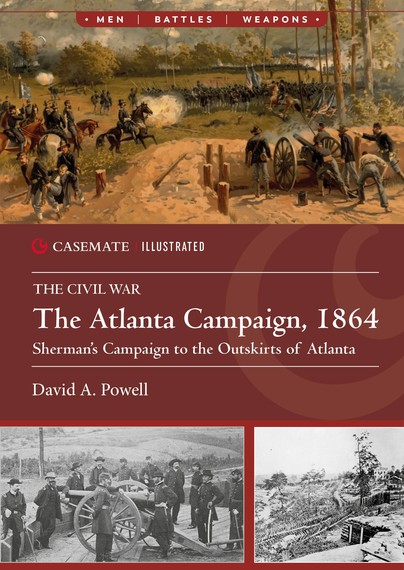
Format: Paperback
Pages: 128
ISBN: 9781636242897
Pub Date: 05 Mar 2024
Illustrations: 100+ illustrations
Description:
The campaign for Atlanta was pivotal to the outcome of the American Civil War. Roughly 190,000 men waged war across northern Georgia in a struggle that lasted 133 days. Today a national park at Kennesaw commemorates this titanic fight, and there are a surprising number of physical reminders still extant across the state.
The struggle for Atlanta divides naturally into two stages. The first half of the campaign, from May to mid-July, can be defined as a war of maneuver, called by one historian the “Red Clay Minuet.” Under Joseph E. Johnston the Confederate Army of Tennessee repeatedly invited battle from strong defensive positions. Under William T. Sherman, the combined Federal armies of the Cumberland, the Tennessee, and the Ohio repeatedly avoided attacking those positions; Sherman preferring to outflank them instead. Though there were a number of sharp, bloody engagements during this phase of the campaign, the combats were limited. Only the battles of Resaca and Kennesaw Mountain could be considered general engagements.Johnston’s repeated retreats and the commensurate loss of terrain finally forced Confederate President Jefferson Davis to replace him with a more aggressive commander—John B. Hood.This work will portray the first half of the Atlanta Campaign in text and images, using both historic sketches and photographs, as well as post-war and modern images. Extant trenches, rifle pits, redoubts, shoupades, and other works, as well as the battlefields, will be covered, as well as surviving historic structures and the monuments and cemeteries that commemorate the campaign.
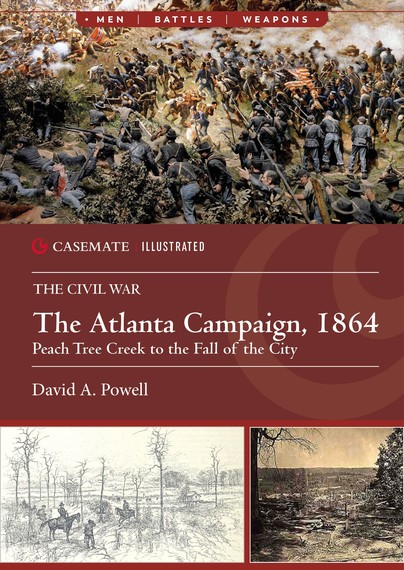
Format: Paperback
Pages: 128
ISBN: 9781636242910
Pub Date: 05 Mar 2024
Illustrations: 100+ illustrations
Description:
General John Bell Hood’s tenure commanding the Confederate Army of Tennessee stood in marked contrast to that of his predecessor Joseph E. Johnston. Where Johnston was forced to conduct a war of maneuver, parrying William T.
Sherman’s repeated flanking attempts, he rarely risked offensive blows. The initiative remained almost entirely with the Federals. When Johnston did stand to accept battle, with only a few exceptions, he received enemy assaults behind fortified lines. However, weeks of retreating undermined morale.With Hood in charge, offense became the order of the day. Hood fought the two largest and bloodiest battles of the entire campaign within the space of two days: attacking at Peachtree Creek on July 20, and again at the Battle of Atlanta on July 22. A third attack at Ezra Church on July 28 was launched by Stephen D. Lee, on his own initiative. The results of all three battles, however, were the same—bloody failures for the Confederates. Thereafter, Hood adopted a more defensive strategy, choosing to preserve what combat power his army retained.The second volume on the Atlanta campaign portrays the final months of the struggle for Atlanta, from mid-July to September, including what remains to be seen of the battles around the city: Peachtree Creek, Atlanta, Decatur, and Ezra Church. The siege will cover historic views of Atlanta, operations east of the city, and the city’s capture. The cavalry chapter focuses on the Union cavalry raids south of Atlanta which ended in disaster. Finally, the fighting at Jonesboro will bring the series to a close.
















